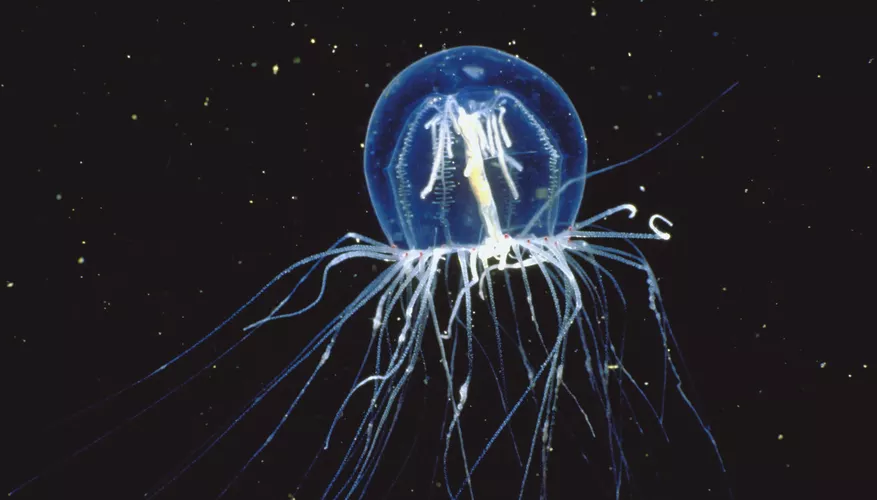Tentacles are specialized, boneless appendages found in various animal species across both aquatic and terrestrial environments. These versatile appendages play critical roles in hunting, sensing, and sometimes even in movement. Animals with tentacles can be vertebrates or invertebrates, and these appendages are used for a wide range of purposes. In this article, we'll explore some of the most remarkable animals that have tentacles, examining their unique functions.

When most people think of tentacles, cephalopods immediately come to mind. This group of mollusks, which includes octopuses, squid, and cuttlefish, is renowned for its sophisticated tentacles. Cephalopods are mollusks, a family that also includes snails and shellfish. However, only squids and cuttlefish possess true tentacles.
| Species | Tentacle Characteristics | Role of Tentacles |
|---|---|---|
| Squid | Long, retractable, spade-shaped tips | Hunting prey, capturing food |
| Cuttlefish | Long, retractable, spade-shaped tips | Prey capture, grasping, and maneuvering |
| Octopus | Arms (not tentacles) | Manipulating objects, hunting, camouflage |
The primary distinction between arms and tentacles is that the latter are longer, retractable, and equipped with flattened or spade-shaped tips. In addition, cephalopods use their tentacles for hunting and capturing prey, making them powerful and effective predators.
Another fascinating group of animals with tentacles are gastropods, such as snails and slugs. These creatures typically have four tentacles on their heads.
| Gastropod Species | Tentacle Characteristics | Role of Tentacles |
|---|---|---|
| Snails | Two eyestalks and two sensory tentacles | Detecting chemicals and enhancing sense of smell |
| Slugs | Similar to snails | Using touch and smell to navigate and find food |
Two of these tentacles function as eyestalks, each ending with an eye, while the other two act as sensory organs to detect chemicals in the environment. These sensory tentacles help gastropods navigate and locate food, giving them an enhanced sense of smell.
Cnidarians, a diverse group of aquarium/52-marine-animals.html">marine animals, are known for their use of tentacles in both defense and prey capture. This phylum includes jellyfish, sea anemones, and coral.
| Cnidarian Species | Tentacle Function | Body Plan |
|---|---|---|
| Jellyfish | Tentacles for stinging and capturing prey | Medusa form (free-floating) |
| Sea Anemones | Tentacles for stinging and attachment | Polyp form (attached to surfaces) |
| Coral | Tentacles for feeding and protection | Polyp form (colonial structures) |
All cnidarians possess specialized cells called nematocytes on their tentacles. These cells release toxins to paralyze prey or defend against threats. The tentacles are arranged differently in the two primary body forms: medusa (like jellyfish) and polyp (like sea anemones and coral).
Though they resemble snakes or eels, caecilians are actually amphibians. Found worldwide, caecilians are often burrow-dwelling and elusive. Some species possess two sensory tentacles on their heads, which are used for navigation and prey detection.
| Caecilian Species | Tentacle Characteristics | Role of Tentacles |
|---|---|---|
| Caecilians | Sensory tentacles on head | Sensory detection, navigation underground |
These tentacles help caecilians hunt prey (such as worms and insects) and navigate through the underground environment, much like the star-nosed mole described below.
The star-nosed mole (Condylura cristata) is a small mammal native to North America. It has a unique feature: 22 tentacles around its nose, each measuring just 1 to 4 millimeters long.
| Species | Tentacle Characteristics | Role of Tentacles |
|---|---|---|
| Star-Nosed Mole | 22 tentacles with 25,000 touch receptors | Best sense of touch in mammals, prey detection |
Each of these tentacles contains 25,000 touch receptors, known as Eimer's organs, which give the star-nosed mole the most sensitive sense of touch of any mammal. This allows it to detect even the tiniest variations in texture while hunting for food underground.
Tentacles are highly specialized appendages that allow animals to interact with their environment in extraordinary ways. From cephalopods using their tentacles for hunting prey, to gastropods enhancing their sense of smell, to cnidarians defending themselves with stinging tentacles, these creatures exhibit a variety of tentacle functions. Even mammals like the star-nosed mole utilize tentacles for sensory exploration. Tentacles are truly one of nature's most remarkable adaptations, helping animals survive and thrive in their unique environments.
animal tags: tentacle
We created this article in conjunction with AI technology, then made sure it was fact-checked and edited by a Animals Top editor.